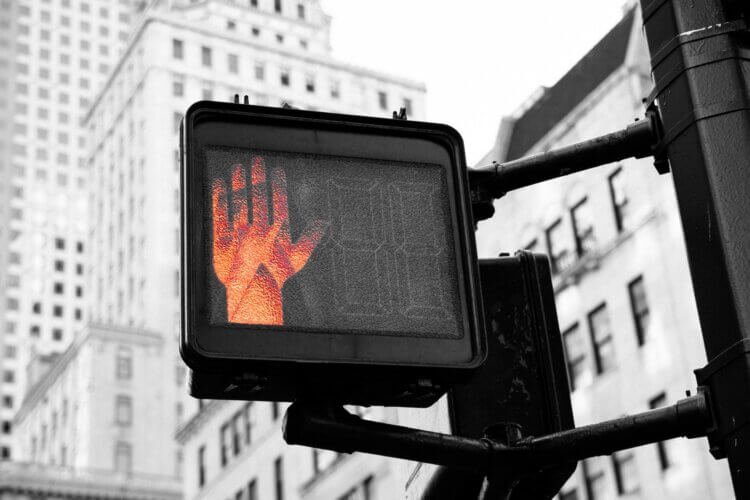In my early 40s, not long after my now ex-husband and I split up—and a couple years into my tenure as executive director at Community Change Inc.—my blood pressure started to creep up to the very high end of normal. Hypertension runs in my family, and played a role in both of my parents’ early deaths. Granted, in my early 40s, my Dad was still on this dusty rock, but he had started experiencing severe health issues related to his hypertension and high cholesterol. As a result of my family medical history, I was strongly advised to make some changes in my life if I wanted to avoid following in my parents’ footsteps.
I dabbled in acupuncture and meditation and I briefly changed my eating habits, but the reality was that I was too busy trying to start over after a 20-year marriage and figured I would get around to it. As long as my blood pressure danced the line of “high normal” without crossing over, I wasn’t too worried. I ended up pushing myself harder in my 40s than I ever had in my life, as I spent a significant amount of time in Boston for work, despite residing on a barrier island off the coast of Maine, I was parenting a pre-teen (then teenager)—and all while growing this blog into a full-blown business, which would include travel for speaking engagements. In the mix of juggling motherhood and work, I had an adult son who would marry and have his own child, while I was trying to fit in time for myself that I had never had as a result of marrying early and having my son at 19.
For most of my 40s, I averaged around five hours of sleep a night as my body waltzed into perimenopause and, according to my Fitbit records, my resting heart rate was well into the 70s, a place it should not be. Especially considering I packed on roughly 30 pounds during this time, no doubt due to my chronic sleep deprivation and tendency to eat things that didn’t require that I had to cook.
Honestly, I was on the fast track to a health disaster but because I was busy—and seemed okay—it didn’t seem so bad. I mean, the extra weight was kinda becoming and who needs sleep when they are busy trying to change the world? Then 2020 happened, and when our collective world came crashing down due to COVID, my world was already in free fall with a child in crisis and a father whose growing health issues ramped up to the massive stroke in May 2020 that would take his life the following month. My personal wake-up call started in late May of 2020, with a massive panic attack that required paramedics. I brushed it off as the stress of my Dad actively dying in the middle of a pandemic in the midst of a global uprising because of the killing of George Floyd. The problem was that even when I returned home after my Dads’ death, my body was sending me clear signals that danger was not far away.
It took a second ride on the fireboat to get to the emergency room on the mainland this spring to realize that I actually had to make more serious changes in my life. It wasn’t enough to go halfway; I actually had to make changes and health goals and actively work on them daily. That included accepting that I needed to take hypertension medication, which is something that I had long fought against. In other words, I needed to become the change, and I had to put in some actual action. I will also be the first to admit that I am still a work in progress. But the point is, I am trying to do everything that I need to do: medication, exercise, changing my diet, etc. to avoid meeting the same fate as my parents—an unnecessarily early death.
So why am I telling you this story? Because in many ways, I see parallels between my personal journey to wellness and the journey of so many white people who consider themselves to be anti-racists.
Between 2016 with the election of Trump and 2020 with its pandemic and even more blatant violence against Black people, a lot of white people got interested in anti-racism work. Whether from the horror that Trump was president and the years of ensuing chaos rooted in his racism, bigotry, and xenophobia—or the horrific murder of George Floyd—white people were waking up to realize that America’s racism problem was still here.
Most of us who weren’t white knew this already and had known it a long time. Racism had never actually gone anywhere during the Obama years. It was just dancing on the line of high normal while we watched the rapid growth of the Tea Party and other related cretins. In many ways, it was comparable to my blood pressure. Things seemed fine enough to be aware of racial stuff, but there was no sense of urgency among white people. Until Trump was elected.
During the Trump years, the collective body of white people who consider themselves anti-racist got busy doing all the right things for the health of the nation. But much like my early attempts at change, these changes didn’t stick. Sure, you read the books, blogs, and social media posts. You attended the rallies and you supported various activists of color and you voted for Biden. In other words, you did all the stuff to get your blood pressure down but then slowly eased up on those practices. After all, we had survived the Trump years and COVID. You couldn’t possibly be expected to do this stuff all the time? Could you?
Well, much like my struggles with my blood pressure and managing stress, if you take a break, the blood pressure starts to come back and all the nasty effects of hypertension settle back into the body. Ask me how I know this?
Except that when the collective body of white people who consider them anti-racist stops being active, it creates an even greater opportunity for the actual racists and fascists to plant roots. As a result, white nationalism is really on the rise, and the uncomfortable reality is that Trump is not out of the woods as a serious contender for president. The recent polls are not at all reassuring, and even the man’s serious and significant legal woes are not a deterrent for some—especially because the GOP lacks any reasonable alternatives to Trump.
As I said in 2016, Trump speaks to and for a significant portion of the white population, for a myriad of reasons. He gives voice to the white people who feel they have been forgotten; he allows them to feel seen and heard. They see racial justice as an attack against whiteness; Trump promises to put them first always.
Despite every awful reason, there are plenty of white people who if given the chance to cast a ballot for this man—who will happily do so. It also means that the anti-racist white people failed at critical work in their communities and with their people. We knew in 2016 that 53% of white women voted for Trump despite his raging misogyny.
Why are there still so many white people interested in this failure? Why are we even still discussing this man in 2023? We are discussing him because there is a certain level of denial that resides within white anti-racist spaces—a denial that doesn’t grasp that high normals in both blood pressure and racism rarely go away on their own. They become huge problems.
Friends, as I have said before, we are far beyond the get-informed and learning stage. As we move closer to 2024 and the next presidential election, people need actual action plans. Plans that move from the theoretical to the practical application of all the years of anti-racism knowledge. Actions that work to break up racism at the structural and personal levels.
You can’t be vested in the DEI initiatives in your organizations without a plan for taking this work into your actual everyday lives. You need to know how to talk to your fellow white people, including the actively racist white people. You need to be ready to do everything possible to stave off Trump 2.0 or anyone else cut from his cloth. You have to have an action plan to address the growing anti-Semitic and racist discourse/action in your local communities. Racism, bigotry, xenophobia, and fascism are on the ballot in 2024 whether it is explicitly named or not. That means this is the time for anti-racists to activate and move from talk to action, Otherwise, our current state of high normal racism will shift into life-endangering racism, violent nationalism, and more for all of us.
If this piece or this blog resonates with you, please consider a one-time “tip” or become a monthly “patron”…this space runs on love and reader support. Or consider bringing me to your organization or group.
Image by Kai Pilger via Unsplash.

